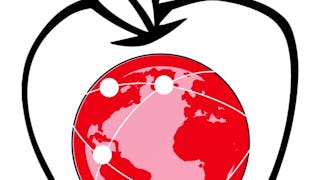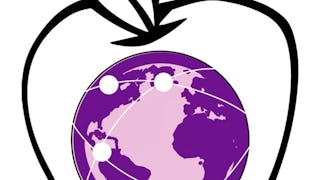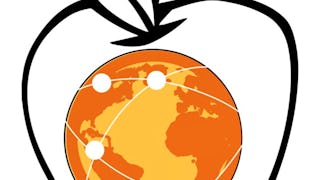Dans ce cours, vous vous concentrerez sur la façon dont les appareils "intelligents" ont changé la façon dont nous interagissons avec les autres de manière personnelle, en influençant la façon dont nous restons connectés dans notre société de plus en plus mobile. Cela se fera par le biais d'une série de sections d'enseignement en binôme, explorant un "impact de l'informatique" spécifique dans votre journée typique et les "technologies et concepts informatiques" qui permettent cet impact, le tout à un niveau approprié à la maternelle et au collège.



Impacts de la technologie sur l'enseignement : Relations
Ce cours fait partie de Spécialisation Impacts de la technologie sur l'enseignement de la maternelle à la 12e année

Instructeur : Beth Simon
2 027 déjà inscrits
Inclus avec 
Détails à connaître

Ajouter à votre profil LinkedIn
7 devoirs
Découvrez comment les employés des entreprises prestigieuses maîtrisent des compétences recherchées

Élaborez votre expertise du sujet
- Apprenez de nouveaux concepts auprès d'experts du secteur
- Acquérez une compréhension de base d'un sujet ou d'un outil
- Développez des compétences professionnelles avec des projets pratiques
- Obtenez un certificat professionnel partageable


Obtenez un certificat professionnel
Ajoutez cette qualification à votre profil LinkedIn ou à votre CV
Partagez-le sur les réseaux sociaux et dans votre évaluation de performance

Il y a 5 modules dans ce cours
Bienvenue ! Vous souhaitez enseigner l'impact de la technologie sur nos relations ? Vous voulez en savoir plus sur les concepts de calcul et d'informatique qui sous-tendent ces technologies ? Nous utiliserons une approche basée sur les problèmes pour explorer des façons intéressantes d'enseigner les concepts de réseaux et d'Internet, de données et d'analyse, et même d'algorithmes et de représentation des données. Enfin, nous évaluerons, critiquerons et améliorerons/personnaliserons deux plans de cours - l'un de votre choix et l'autre sur les pixels. Plus précisément, nous chercherons à améliorer ces plans de cours en augmentant le temps d'apprentissage interactif pour les élèves.
Inclus
2 vidéos3 lectures1 devoir1 sujet de discussion
Comment votre capacité à vous connecter avec vos amis et votre famille a-t-elle changé depuis que les médias sociaux sont devenus omniprésents ? Quels sont les différents groupes de personnes avec lesquels vous êtes en contact ? Outre l'impact des médias sociaux sur nos vies et notre société, nous examinerons en détail l'histoire et le développement de l'algorithme du fil d'actualité de Facebook, ce qui nous permettra d'en apprendre un peu plus sur le génie logiciel, l'expérience utilisateur et l'heuristique. En interagissant avec un outil de visualisation de Facebook, nous aurons la curiosité d'étudier ce qui fait que les programmes prennent beaucoup de temps à s'exécuter et comment les informaticiens catégorisent la durée d'exécution des programmes.
Inclus
11 vidéos9 lectures3 devoirs6 éléments d'application3 sujets de discussion
La collecte de données sur notre localisation physique ayant considérablement augmenté, nous disposons de nouveaux moyens de trouver des amis et de soutenir les relations entre les personnes qui nous sont "proches". Nous examinerons plusieurs applications qui tirent parti de cette situation et nous nous pencherons sur les représentations d'images numériques nécessaires pour prendre en charge des filtres tels que ceux que l'on trouve sur Snapchat.
Inclus
4 vidéos7 lectures2 devoirs4 éléments d'application1 sujet de discussion
Cette semaine, nous vous présenterons le cadre de référence de l'informatique K-12 et les normes informatiques K-12 de la Computer Science Teachers Association, qui commencent à encadrer les normes informatiques K-12 des États américains. Nous vous guiderons dans la recherche et le développement d'un plan de cours pour une classe particulière autour d'une ressource permettant d'apprendre l'impact de la technologie sur la culture. Ensuite, nous apprendrons à mieux différencier et définir "l'apprentissage actif" en utilisant le cadre d'apprentissage ICAP (interactif, constructif, actif, passif) et nous verrons comment l'instruction par les pairs peut être utilisée pour étayer les expériences d'apprentissage interactif.
Inclus
9 vidéos2 lectures1 devoir
Nous allons améliorer les plans de cours (y compris celui que vous avez créé la semaine dernière) afin d'augmenter la part d'apprentissage " interactif " qu'ils contiennent. De plus, nous tenterons d'aligner ces leçons sur les normes de la CSTA, tout en reconnaissant qu'elles ont peut-être été produites avant que les normes de la CSTA n'existent. Cependant, le fait de voir comment elles correspondent (ou ne correspondent pas) aux normes peut nous donner des idées sur la façon dont ces leçons pourraient être modifiées.
Inclus
1 vidéo1 lecture1 élément d'application2 sujets de discussion
Instructeur

Offert par
Recommandé si vous êtes intéressé(e) par L'éducation


University of California San Diego


University of California San Diego


University of California San Diego


University of California San Diego
Pour quelles raisons les étudiants sur Coursera nous choisissent-ils pour leur carrière ?





Ouvrez de nouvelles portes avec Coursera Plus
Accès illimité à 10,000+ cours de niveau international, projets pratiques et programmes de certification prêts à l'emploi - tous inclus dans votre abonnement.
Faites progresser votre carrière avec un diplôme en ligne
Obtenez un diplôme auprès d’universités de renommée mondiale - 100 % en ligne
Rejoignez plus de 3 400 entreprises mondiales qui ont choisi Coursera pour les affaires
Améliorez les compétences de vos employés pour exceller dans l’économie numérique
Foire Aux Questions
Comment votre capacité à vous connecter aux autres a-t-elle changé grâce à Facebook, Instagram ou FaceTime ? Dans ce cours, vous explorerez comment notre capacité à rester connecté et à établir des liens dans une société mobile a été rendue possible ou inhibée par la technologie. Vous explorerez des concepts techniques tels que les processus d'ingénierie logicielle, l'heuristique, le temps d'exécution algorithmique et le codage et le traitement des images numériques. Après avoir suivi ce cours avec succès, vous serez en mesure de.. :
[1] Débattre des différentes façons dont les technologies omniprésentes et connectées ont bénéficié ou inhibé notre capacité à maintenir et à créer de nouvelles relations.
[2] Expliquer comment les décisions de conception ont influencé l'algorithme du fil d'actualité de Facebook, la valeur des heuristiques, comment le temps d'exécution d'un algorithme est analysé, et être capable de modéliser l'encodage d'une image, de représenter les couleurs de multiples façons, et d'expliquer les modifications d'image telles que les filtres et les flous.
[Mettre en œuvre les connaissances pédagogiques dans des contextes spécifiques à l'informatique, y compris l'apprentissage interactif et actif. Utilisez les normes de l'ACTS en informatique de la maternelle à la 12e année et les suggestions d'apprentissage interactif pour la science informatique afin d'améliorer un plan de leçon de votre choix.
Oui ! Ce cours est conçu comme une composante d'une Specialization qui est 1 d'un ensemble de 4 Specializations (tous seront offerts sur Coursera) qui soutiendra les exigences de l'autorisation supplémentaire de la Californie. En outre, la Specialization peut soutenir la crédibilité ou l'autorisation dans d'autres États. Toutefois, la plupart des États exigent un relevé de notes d'un établissement d'enseignement supérieur accrédité. Consultez la question de la FAQ intitulée "Vais-je obtenir des crédits universitaires ?" pour savoir comment obtenir un tel relevé de notes.
Oui, vous pouvez obtenir des crédits UCSD pour compléter ce cours, mais seulement en complétant la spécialisation complète Teaching Impacts of Technology in K-12 Education. En outre, vous devrez (1) vous inscrire à un cours supplémentaire de l'UCSD Extension avant de terminer le projet de spécialisation (500 $) et (2) réaliser une partie du projet de spécialisation par l'intermédiaire d'un service d'examen en ligne. Après cela, vos notes de cours de Specializations seront accumulées et un relevé de notes avec votre note finale (à la fois lettre grade ou pass-only soutenu) sera délivré par UCSD avec 4 unités de niveau supérieur. Ces unités peuvent être prises en compte pour l'obtention du California Supplementary Authorization.
Plus de questions
Aide financière disponible,

